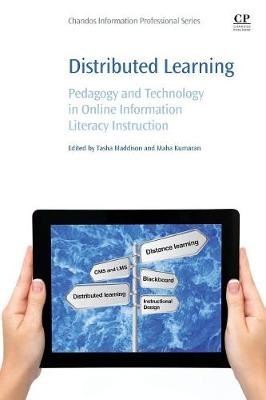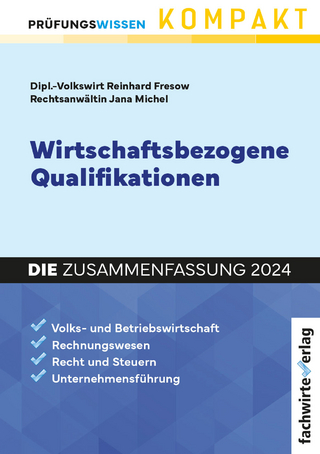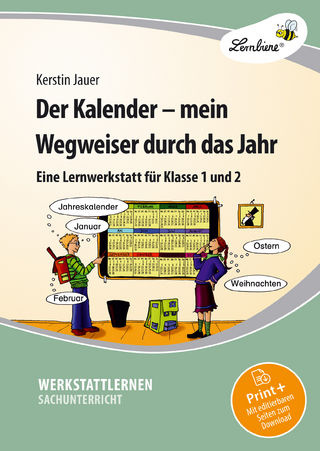
Distributed Learning
Chandos Publishing (Oxford) Ltd (Verlag)
978-0-08-100598-9 (ISBN)
Tasha Maddison is a Librarian with Saskatchewan Polytechnic. Previously she worked as a Librarian at the University of Saskatchewan. She has been active on many committees involving online library instruction, including a team that looked at integrating library learning objects into Desire2Learn, and a task force studying the first year experience and how best to meet students needs. She spent several years researching and implementing flipped classrooms into undergraduate engineering courses, and has also explored teaching effectiveness of online tutorials when compared to in-person instruction. She completed a B.A. in English and Drama at the University of Saskatchewan, and the M.L.I.S. program at Wayne State University in Detroit, MI in 2012, where she specialized in academic libraries, reference and instruction. Maha Kumaran is currently the Liaison Librarian for the Colleges of Nursing and Nutrition at the University of Saskatchewan, Saskatoon, Canada. As the liaison librarian she collaborates with faculty to teach undergraduate and graduate students. Students from the College of Nursing are located all over the province, the country and beyond. Depending on the locality of the students, she either teaches in-person or via Web-Ex, Skype, Blackboard Collaborate or by using the Remote Desktop Connection. She has recorded videos using Camtasia and has made it available for students through her nursing research guide. She would like to continue to explore how best to teach nursing students in a distributed learning environment. Her academic interests are in the area of multiculturalism, minorities and currently distributed learning environment.
Chapter 1. Introduction
Section I: Foundations of Distributed Learning
Chapter 2. Literature Review of Online Learning in Academic Libraries
Chapter 3. Using Theory and Practice to Build an Instructional Technology Tool Kit
Section II: Pedagogy
Chapter 4. Designing Online Asynchronous Information Literacy Instruction Using the ADDIE Model
Chapter 5. Enhancing Kuhlthau’s Guided Inquiry Model Using Moodle and LibGuides to Strengthen Graduate Students’ Research Skills
Chapter 6. A Model for Teaching Information Literacy in a Required Credit-Bearing Online Course
Chapter 7. Engaging Learners Online: Using Instructional Design Practices to Create Interactive Tutorials
Chapter 8. Developing Best Practices for Creating an Authentic Learning Experience in an Online Learning Environment: Lessons Learned
Section III: Technology
Chapter 9. Delivering Synchronous Online Library Instruction at a Large-Scale Academic Institution: Practical Tips and Lessons Learned
Chapter 10. Making Library Research Real in the Digital Classroom: A Professor–Librarian Partnership
Chapter 11. Forging Connections in Digital Spaces: Teaching Information Literacy Skills Through Engaging Online Activities
Chapter 12. Innovation Through Collaboration: Using an Open-Source Learning Management System to Enhance Library Instruction and Student Learning
Chapter 13. From Technical Troubleshooting to Critical Inquiry: Fostering Inquiry-Based Learning Across Disciplines Through a Tutorial for Online Instructors
Chapter 14. Embedding the Library in the LMS: Is It a Good Investment for Your Organization’s Information Literacy Program?
Chapter 15. A Decade of Distributed Library Learning: The NOSM Health Sciences Library Experience
Chapter 16. Parallel Lines: A Look at Some Common Issues in the Development, Repurposing, and Use of Online Information Literacy Training Resources at Glasgow Caledonian University
Section IV: Case Studies
Chapter 17. Concept to Reality: Integrating Online Library Instruction Into a University English Curriculum
Chapter 18. A Successful Reboot: Reimagining an Online Information Literacy Tutorial for a First-Year Experience Program
Chapter 19. Rethinking Plagiarism in Information Literacy Instruction: A Case Study on Cross-Campus Collaboration in the Creation of an Online Academic Honesty Video Tutorial
Chapter 20. Adapting to the Evolving Information Landscape: A Case Study
Section V: Innovations
Chapter 21. Gaming Library Instruction: Using Interactive Play to Promote Research as a Process
Chapter 22. Implementing Flipped Classroom Model Utilizing Online Learning Guides in an Academic Hospital Library Setting
| Erscheinungsdatum | 27.10.2016 |
|---|---|
| Verlagsort | OXford |
| Sprache | englisch |
| Maße | 152 x 229 mm |
| Gewicht | 520 g |
| Themenwelt | Schulbuch / Wörterbuch ► Unterrichtsvorbereitung ► Unterrichts-Handreichungen |
| Sozialwissenschaften ► Kommunikation / Medien ► Buchhandel / Bibliothekswesen | |
| Sozialwissenschaften ► Pädagogik | |
| ISBN-10 | 0-08-100598-9 / 0081005989 |
| ISBN-13 | 978-0-08-100598-9 / 9780081005989 |
| Zustand | Neuware |
| Haben Sie eine Frage zum Produkt? |
aus dem Bereich


